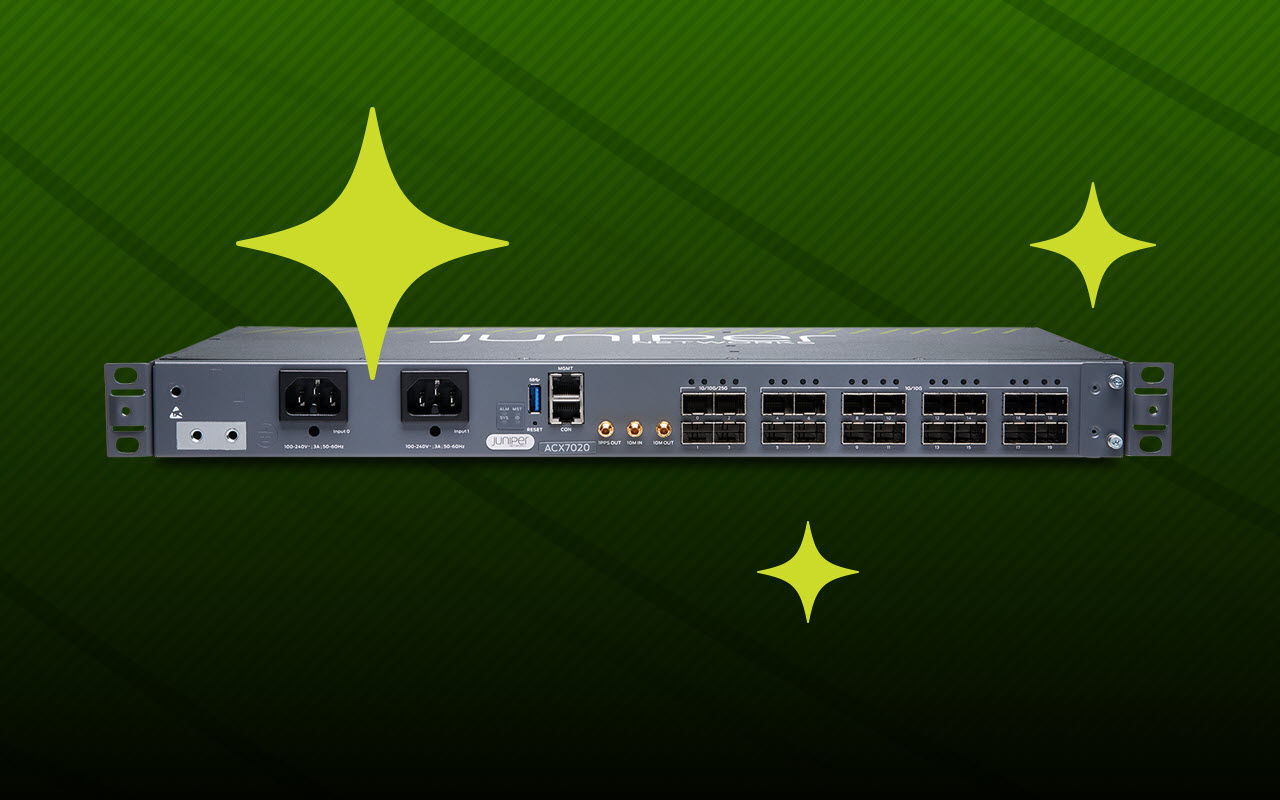Most network architects are, by nature, methodical people. They tend to approach a challenge in a very deliberate, logical, step-by-step manner, starting at Point A and progressing through Points B, C, D and beyond, until they’ve designed and deployed the right solution.
But what if we suggested to them that, instead, they jump straight into Point Z? Would they laugh, or would they scream? Would they react with a quizzical look, or would they chase us out of the room?
In The Seven Habits of Highly Effective People, Stephen Covey tells us that to be most effective, we should “Begin with the end in mind.” In a sense, that’s the thinking behind Juniper’s Cloud-First solutions. Instead of retrofitting legacy network functions into the cloud, we design our applications to be cloud-native from the start, providing service providers with ready-made automation solutions and simplifying their pivot from physical to virtual infrastructure.
The Cloud Shift
The shift to cloud is altering the economics of service delivery and enabling new ultra-low latency services — such as AR/VR and online gaming — while changing metro traffic patterns. At the same time, the continuing evolution of 5G technology is driving the need for more agile network infrastructure, resulting in a shift to disaggregated networking technologies like O-RAN, vBNG, CUPS and Private 5G Stand Alone. For these new low-latency services and disaggregated solutions to be effective, they need to reside in edge clouds, distributed across the metro and closer to the end user.

To make this happen, communication service providers (CSPs) need to deploy data centers across their networks to support virtualized infrastructure and the applications and services that run on them. They’re finding that building and managing these remote distributed data centers, interconnecting them with each other and their end users, and managing the content and services that run across them is challenging. Further adding to the complexity, the industry’s approach of “virtualizing” networking software by simply enabling embedded software to run on x86 platforms doesn’t take full advantage of the agility and resiliency of modern cloud architectures. These legacy solutions often lead to vendor lock-in, increased complexity and don’t scale with the growing demand.
To overcome these challenges, CSPs need to evolve from legacy monolithic applications to micro-serviced based, cloud-native solutions.
Why Cloud-Native?
Based on modern microservices software architectures, cloud-native networking solutions take full advantage of the agility and resiliency of the cloud. They allow CSPs to deploy network infrastructure and services seamlessly across one or multiple data centers. And with cloud-native automation solutions, they can deploy, monitor and manage their virtualized network infrastructure and services from a centralized location. By simplifying operational complexity and enabling the delivery of highly resilient, agile and portable infrastructure and services, they’re able to provide a much better end-user experience.
Simple, Right? Sort of.
CSPs know they have to change the way they build and deploy networks to tap into high-potential growth areas like IoT, streaming video, managed IT and private 5G services. While some CSPs have successfully implemented cloud-native solutions, others are still finding their way. So why isn’t everyone doing it? For many, it’s a matter of taking the first step and asking, “How do we get there from here?”
The Juniper Solution
A Heavy Reading survey of 92 network operators showed that CSPs rank skills and process gaps as their biggest challenges when migrating to a cloud-native architecture. Retraining employees, hiring new talent and implementing the new processes required to move to cloud-native could take valuable time. CSPs need a more immediate solution.
Juniper leverages a cloud-first approach to simplify the deployment of the telco cloud and establish repeatable processes that deliver scale and agility with reliability. Combining cloud fabric infrastructure with automation, security and a robust multivendor ecosystem, the Juniper solution is based on a hybrid model that enables service providers to deploy their own private clouds and work with hyperscalers where it makes economic sense.
Juniper’s Cloud-First solution starts with a universal cloud fabric architecture for data centers, comprised of a world-class switching, routing, and security infrastructure, and Juniper Apstra, our intent-based multivendor fabric management solution. Apstra manages and automates the entire lifecycle of the data center fabric, from Day 0 (design) to Day 1 (deployment) through Day 2+ (ongoing operations). The solution democratizes the operational best practices that have driven the cloud and elevates the operations above the devices, allowing people to focus on what they want, not how to get it.
With the fabric architecture in place, Cloud-Native Contrail Networking (CN2) – based on Kubernetes – provides advanced application security, service chaining, centralized control and lifecycle management for software defined network (SDN) VNFs and CNFs to support the world’s largest data centers and networks. A key benefit of CN2 is its ability to automate the deployment of new cloud infrastructure and application workloads, minimizing the need for manual configuration by the network operations team. CN2 ensures the consistent deployment of network configurations, eliminates human errors, improves network availability and reduces time to deploy network moves, adds and changes.
With the data center and virtualize infrastructure deployed, our Cloud Metro solution, managed by Paragon Automation, connects these data centers together, as well as end-users, to their applications in the cloud. AndJuniper’s Connected Security automatically detects and mitigates threats to ensure a secure, trusted, high-quality experience for users and their applications.
What it Delivers
What does all this mean to a CSP’s bottom line? CSPs deploying Juniper’s Cloud-First data center infrastructure fabric, Apstra intent-based automation, and CN2 SDN orchestration and management have seen OpEx savings of 41%, total cost of ownership (TCO) savings of 23%, and a return on investment (ROI) of 312% according to a recent study by ACG Research.
By simplifying cloud complexity and the shift to a cloud-native environment, Juniper’s Cloud-First solution accelerates CSPs’ evolution to tomorrow’s next-gen networks and their ability to support enterprise customers in their digital transformations. As more operators evolve their networks to cloud-native architectures, Juniper’s Cloud-First solutions can provide the tools to speed those deployments and begin reaping the benefits of cloud-native sooner.

























